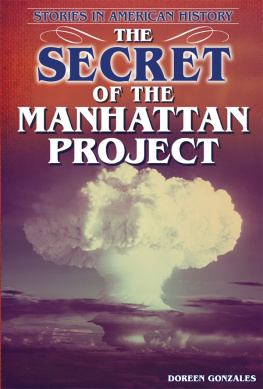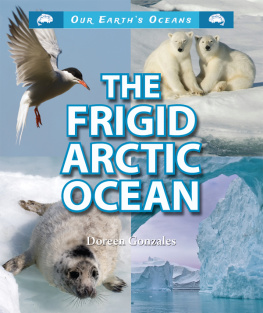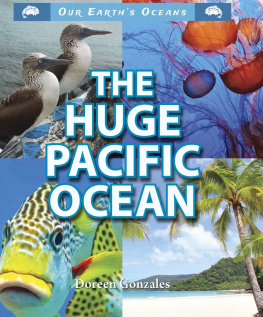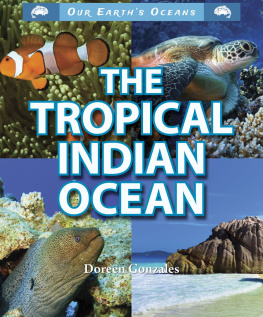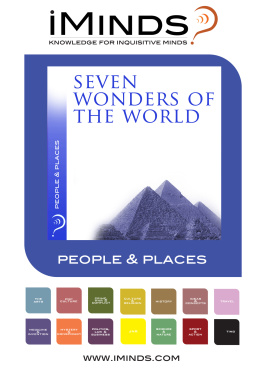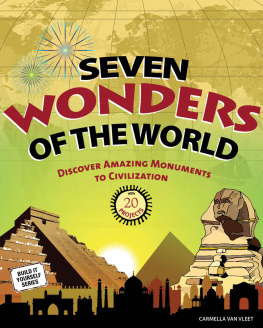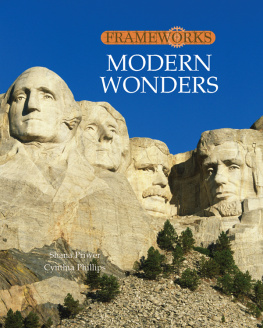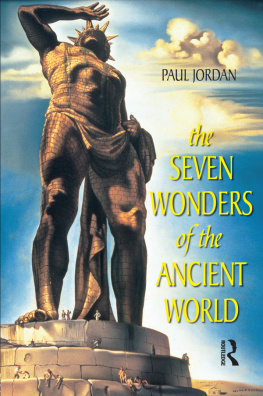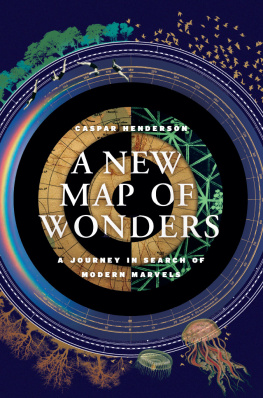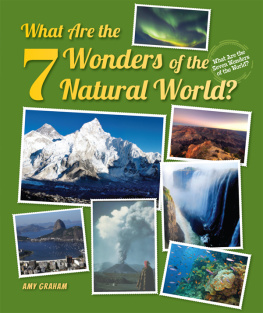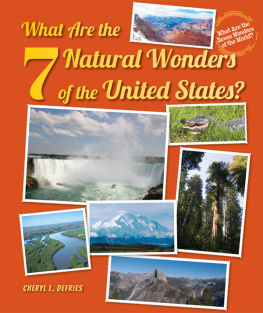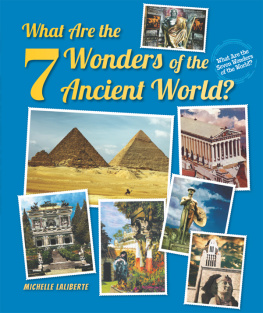Modern World Wonders
This book serves as an introduction and overview of the seven wonders of the modern worldThe Panama Canal, North Sea Protection Works, the Empire State Building, the Golden Gate Bridge, the Burj Khalifa, the Itaipu Dam, and the Channel Tunnel. Each of these structures began as a dream to move faster, go higher, or live better. Discover the wonders of these structures and their fascinating facts.
ABOUT THE AUTHOR
Doreen Gonzales is an elementary school teacher who enjoys writing in her free time. She has written several nonfiction books for young readers, including a series called Our Earth's Oceans.

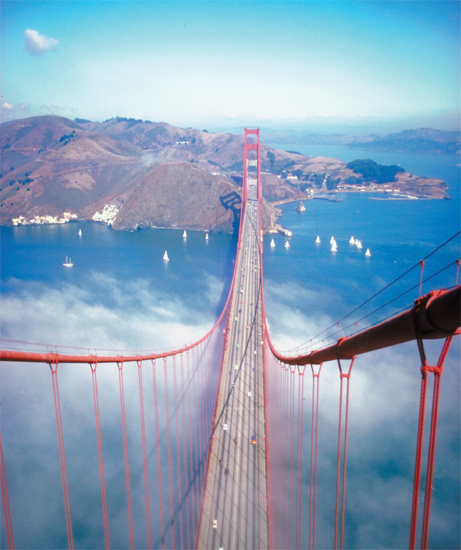
Image Credit: 2011 Photos.com, a division of Getty Images. All rights reserved.
An aerial view of the Golden Gate Bridge
The Panama Canal
- The Panama Canal stretches from Coln to Panama City, Panama.
- Construction took place from 1904 to 1914.
- The canal is roughly fifty miles (eighty-one kilometers) long.
- The cost of the Panama canal was $352 million.
North Sea Protection Works
- The North Sea Protection Works is located in the Netherlands.
- They were built from 1923 to 1986.
- Oosterscheldedam is the longest of the works, covering 6 miles (9.7 kilometers).
- The cost to build was $5 billion.
The Empire State Building
- New York City, New York, is the home of the Empire State Building.
- The Empire State Building was built from 1929 to 1931.
- It is 1,250 feet (381 meters) in height.
The Golden Gate Bridge
- The Golden Gate Bridge is located in San Francisco, California, and spans a body of water known as the Golden Gate Strait.
- Building the Golden Gate Bridge took place from 1933 to 1937.
- The bridge is 8,891 feet (2,737 meters) long.
- The cost of building the Golden Gate Bridge was $27 million.
The Burj Khalifa
- The Burj Khalifa is located in Dubai, United Arab Emirates.
- The building gained the official title of Tallest Building in the World at its opening on January 4, 2010.
- At 2,717 feet (828 meters) tall, it is taller than any other man-made structure ever built.
The Itaipu Dam
- The Itaipu Dam spans the Paran River between the Brazil and Paraguay.
- Construction on the dam took place from 1975 to 1991.
- The dam is about five miles (eight kilometers) long.
- It cost $18 billion to build the dam.
The Channel Tunnel
- The Channel Tunnel, commonly known as the Chunnel, stretches underneath the English Channel from Folkestone, England to Coquelles, France.
- Building the Chunnel began in 1987; it was not opened until 1994.
- The Chunnel is 32 miles (51.5 kilometers) long, of which 23 miles (37 kilometers) is under the sea.
- Completion of the tunnel cost $21 million.
Each of the structures in this book began as a dream to move faster, go higher, or live better. The Panama Canal, for example, was built to speed travel between the Pacific and Atlantic Oceans. Its construction required removing enough dirt and rubble to open a 16-foot-wide (5-meter) tunnel to the center of the earth.
Some structures were built to go higher than ever before. The Empire State Building, for instance, was built to fulfill a dream to construct the highest building in the world. It is so tall, there is over 17 million feet (5 million meters) of telephone wire inside it.
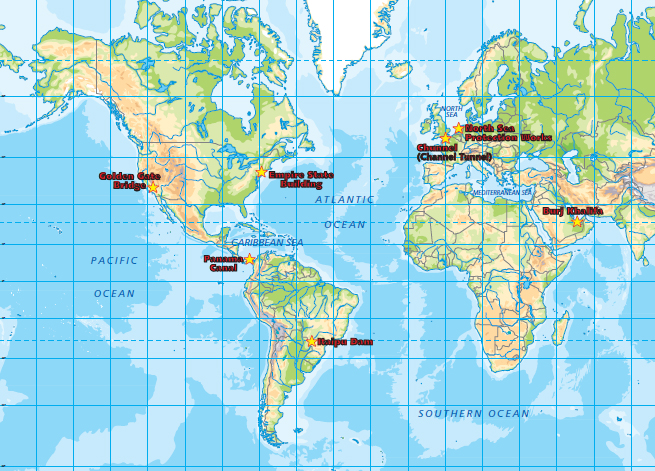
Image Credit: Enslow Publishers, Inc.
This world map shows where each of the modern wonders is located.
The desire to live better is what motivated the construction of the North Sea Protection Works. These dams and barriers hold back the ocean and protect the people of the Netherlands from flooding. Its longest dam is the Oosterscheldedam. It is as long as a thousand school buses parked end to end.
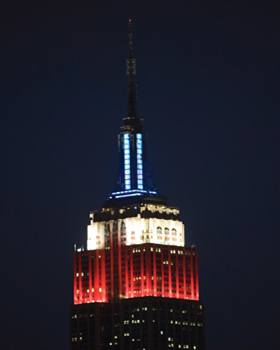
Image Credit: 1999 PhotoDisc
The lights that illuminate the top of the Empire State Building change colors at various times throughout the year. In this photo, the lights are red, white, and blue to celebrate the Fourth of July holiday.
None of the structures in this book were easy to build. Each one pitted human ingenuity and perseverance against nature. In the end, human desire triumphed. Along the way, new machines were often invented and new engineering methods devised. For example, the engineers of the Golden Gate Bridge worked for months solving mathematical equations to create a bridge that could withstand 100-mile per hour (185.2-kilometer per hour) winds. Their work was done before the age of computers, with nothing more than slide rules and adding machines to crunch numbers. The result? A bridge that safely swings nearly twenty-eight feet (nine meters).
As their creators imaginatively overcame obstacles, these structures became the marvels of their day. The Seven Wonders of the Modern World are examples of modern societys ability to achieve the impossible.
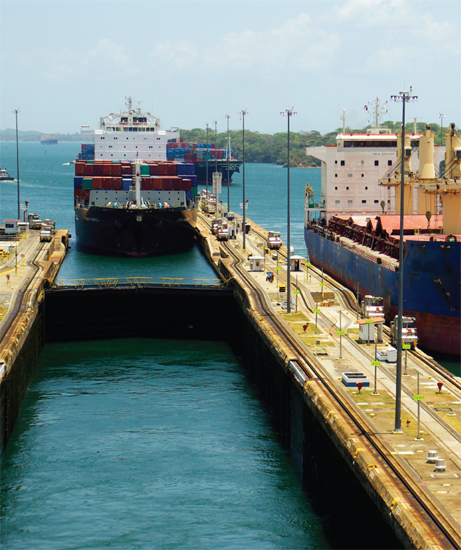
Image Credit: Charles Lytton/ 2011 Photos.com, a division of Getty Images. All rights reserved.
The Panama Canal made it possible for people to sail from the Atlantic Ocean to the Pacific Ocean without having to go around the southern tip of the South American continent.
The Panama Canal creates one of the longest shortcuts in the world. Before it was built, ships going from the Atlantic Ocean to the Pacific Ocean had to sail around South America. The new canal made it possible to cut through Panama, a country at the southern end of North America. This took about eight thousand miles (thirteen thousand kilometers) off the journey. It is such a useful route that thousands of cargo, military, and cruise ships travel through the canal each year.
People had dreamed of connecting the oceans as far back as the 1500s. It would be centuries, though, before the proper machinery and know-how made a canal possible.
In the late 1800s, a canal seemed achievable. The French were the first to try. However, their machines were too small, and tropical diseases killed many workers. By the end of the century, they had given up.
The dream did not die, though. United States president Theodore Roosevelt saw how valuable a canal would be for moving goods and people. Furthermore, he was convinced a canal was essential to the defense of the United States. It would allow the American Navys fleet of ships to move quickly from one side of the country to the other.
In 1903, the United States government paid Panama $10 million for the right to build and operate a canal there. The first task was to make the area safe for workers. Crews cleared brush and drained swamps, killing millions of disease-carrying mosquitoes that had devastated the French attempt.
Soon steam shovels were digging through the hills on the Pacific side of Panama. The earth here was very loose, and landslides slowed the work. It took several years to make a cut 8 miles (13 kilometers) long. During that time, tons of earth were removed to make a channel called the Gaillard Cut.


